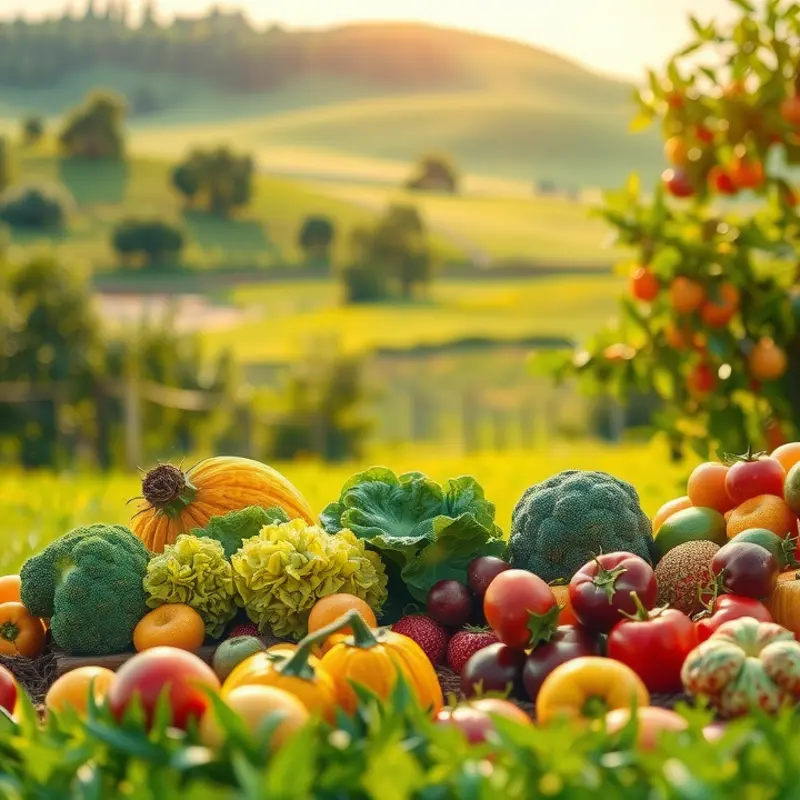The impact of our dietary choices on the environment is profound. By adopting climate-positive eating practices, individuals can play a pivotal role in mitigating climate change. This approach focuses on not only reducing harm but actively contributing to ecological wellbeing, fostering a healthier planet while also enhancing personal health. Understanding the fundamental principles of climate-positive eating empowers environmentally-conscious individuals to make food choices that align with their values and benefit the Earth.
Principles of Climate-Positive Eating

Climate-positive eating is an endeavor not just for health enthusiasts but for anyone committed to environmental stewardship. This concept rests on a foundation of consuming foods that minimize ecological footprints and foster sustainability. By adhering to core principles, we can all make meaningful contributions toward a more sustainable future.
One crucial principle is prioritizing local and seasonal produce. By choosing food that doesn’t need extensive transportation, we significantly cut down carbon emissions. Additionally, seasonal foods often have fewer preservatives and are packed with flavor. Imagine the taste of a ripe, fresh-from-the-farm tomato compared to one that has traveled thousands of miles—it’s a culinary experience defined by its connection to place and time. By understanding how to store and make the most of these ingredients, like the techniques outlined in effective tomato storage strategies, waste can be minimized, enhancing both flavor and sustainability.
Another pillar of climate-positive eating is the embrace of a plant-based diet. Plants require less land, water, and energy compared to animal products. They generate significantly fewer greenhouse gases. By reducing animal product consumption, even moderately, we contribute to the reduction of deforestation and habitat destruction, both primarily driven by livestock farming. The shift need not be absolute; rather, it could be as simple as instituting a “meatless Monday” or focusing on whole, plant-forward meals.
Moreover, the emphasis on whole foods rather than processed products is paramount. Whole foods, such as grains, legumes, vegetables, and fruits, require less energy to produce and often result in lower packaging waste. They provide substantial nutritional benefits, which processed foods often lack due to artificial additives and excessive sugar. Opting for these nutrient-rich foods enhances our health while lowering our dietary carbon footprint.
It’s also valuable to consider the environmental impact of traditional diets versus contemporary, resource-intensive eating habits. Traditional diets often emphasized biodiversity, incorporating a variety of grains and vegetables that adapted well to local ecosystems. In modern contexts, appropriate adjustments might include diversifying crop usage and integrating plants that support local biodiversity, thereby reinforcing ecological balance.
Commitment to these principles enables individual and collective action towards climate positivity. The journey begins with conscious choices that align personal well-being with planetary health. As we embrace foods that are in harmony with the earth’s cycles, we nourish the planet and pave the way for a thriving ecosystem that future generations can enjoy.
Practical Tips for Everyday Choices

Eating in a climate-positive way involves more than just what you put on your plate. It’s about thoughtful planning, sourcing, and preparation. Here are some actionable tips to help guide your daily habits toward a more sustainable future.
Begin with meal planning. Design a weekly meal plan that incorporates diverse and seasonal produce. This encourages you to eat what’s ripe and plentiful, reducing reliance on imports that contribute to high carbon emissions. When creating your plan, think of how ingredients can be used across multiple meals to minimize waste and ensure variety.
Choosing sustainable ingredients starts with knowing where your food comes from. Opt for locally sourced products whenever possible. Local goods not only support community farmers, but they also reduce transport emissions drastically. Visit farmers markets or join a community-supported agriculture (CSA) program to engage directly with producers. This also allows you to discover new, seasonal ingredients and incorporate them into your meals creatively.
Embrace whole foods as a foundation of your diet. Whole fruits and vegetables, legumes, and grains are more energy-efficient to grow and process. This reduces the need for resource-intensive packaging and processing found in many convenience foods. Additionally, consider the benefits of a plant-based diet. Reducing meat consumption, even a few days a week, significantly lowers your dietary carbon footprint.
Mindful consumption plays a crucial role in sustainability. Be aware of portion sizes to avoid excessive consumption which leads to more waste. Take note of expiration dates and implement a “first in, first out” food storage system to use items in a timely manner. For more ideas on reducing food waste, explore resources like these effective tomato storage strategies.
Finally, be conscious of waste management. Composting kitchen scraps can turn food waste into valuable nutrients for your garden, reducing landfill contributions. As you develop new habits, remember that small shifts can lead to substantial positive impacts. By mindfully selecting and preparing food, you embrace a lifestyle that nurtures both your health and that of our planet.
Final words
Choosing climate-positive eating is about making informed decisions that align with personal values while being mindful of the planet’s health. As consumers, each choice we make—whether it’s selecting local produce, opting for plant-based meals, or reducing food waste—adds up to a significant impact. Embracing these principles not only nurtures our bodies with wholesome nutrition but also supports biodiversity, conserves resources, and combats climate change. Together, we can create a sustainable future, one meal at a time.








